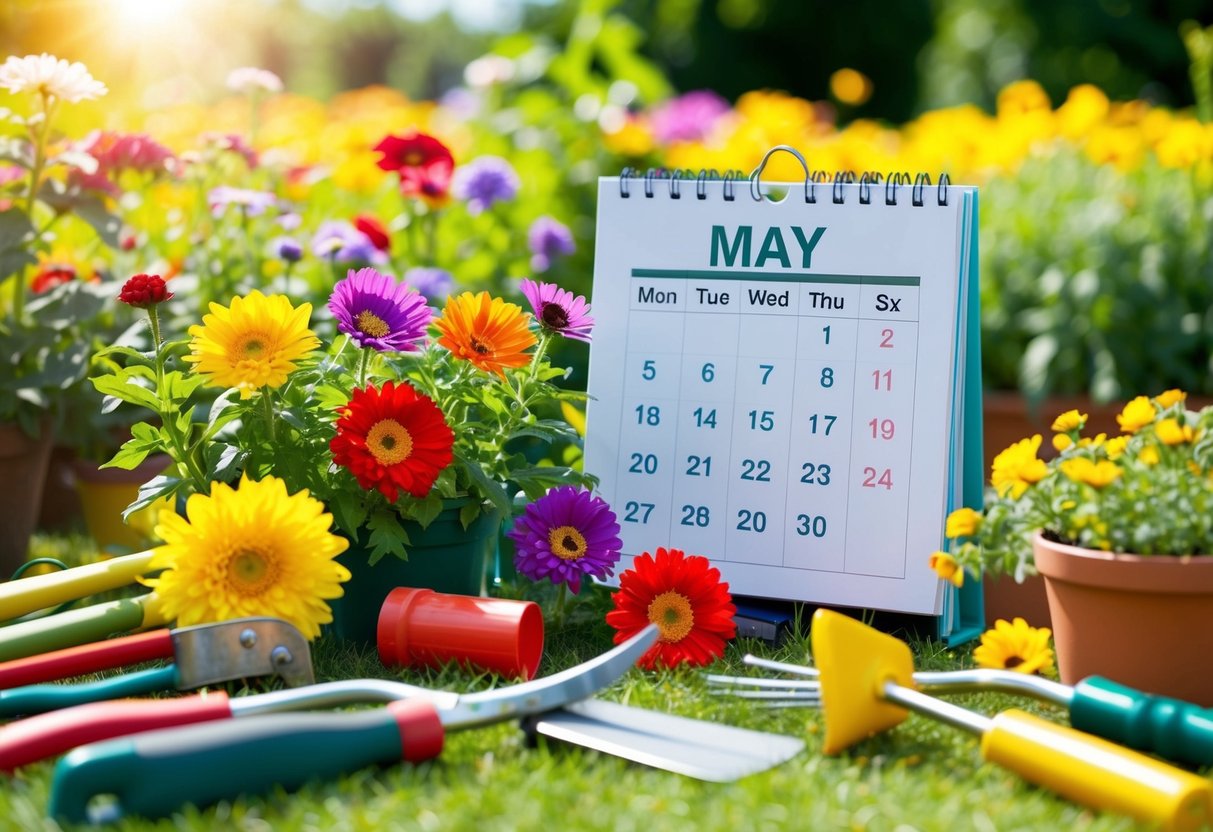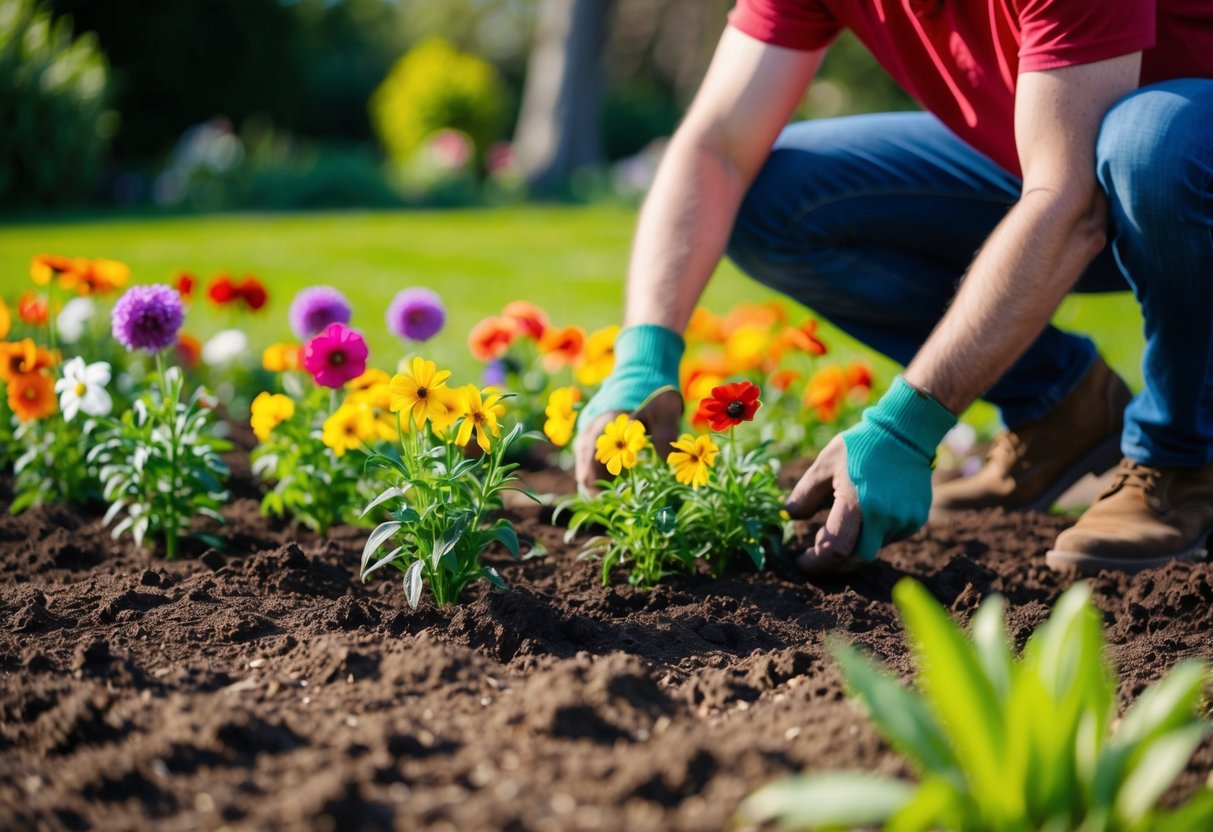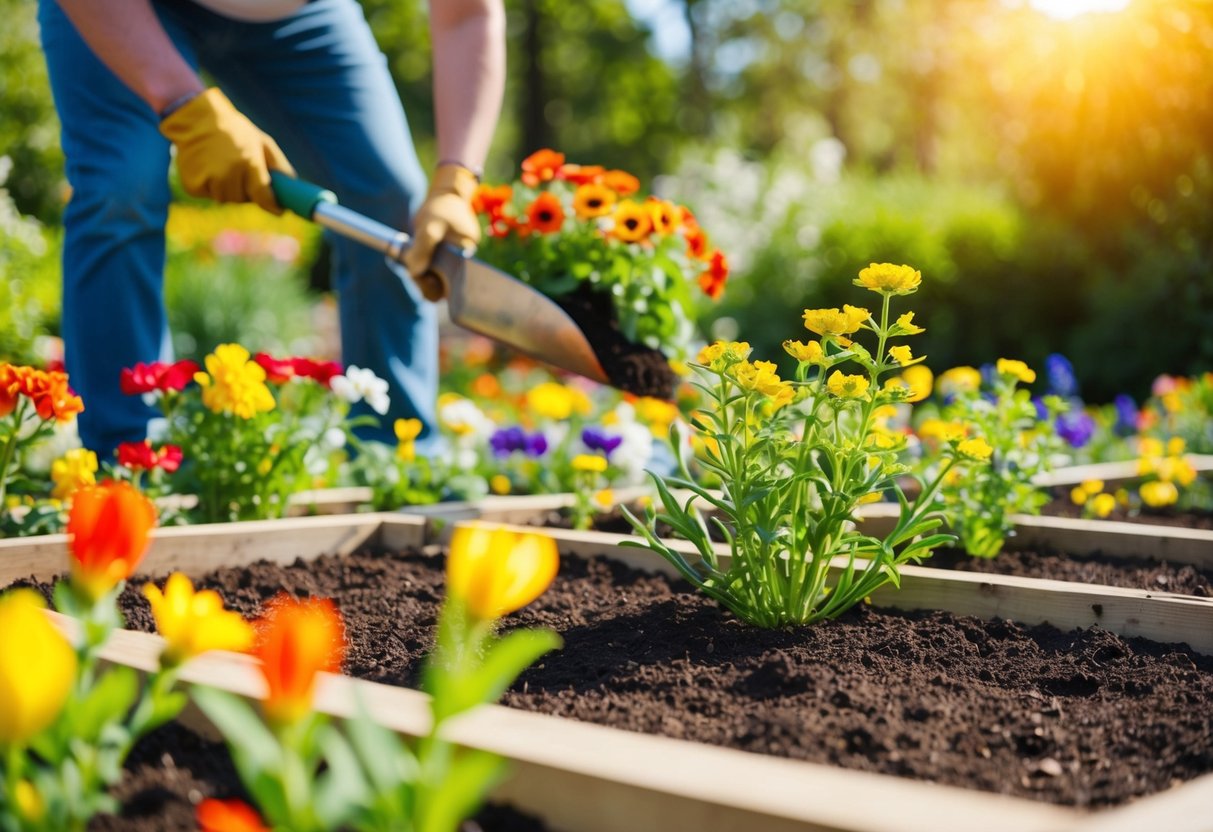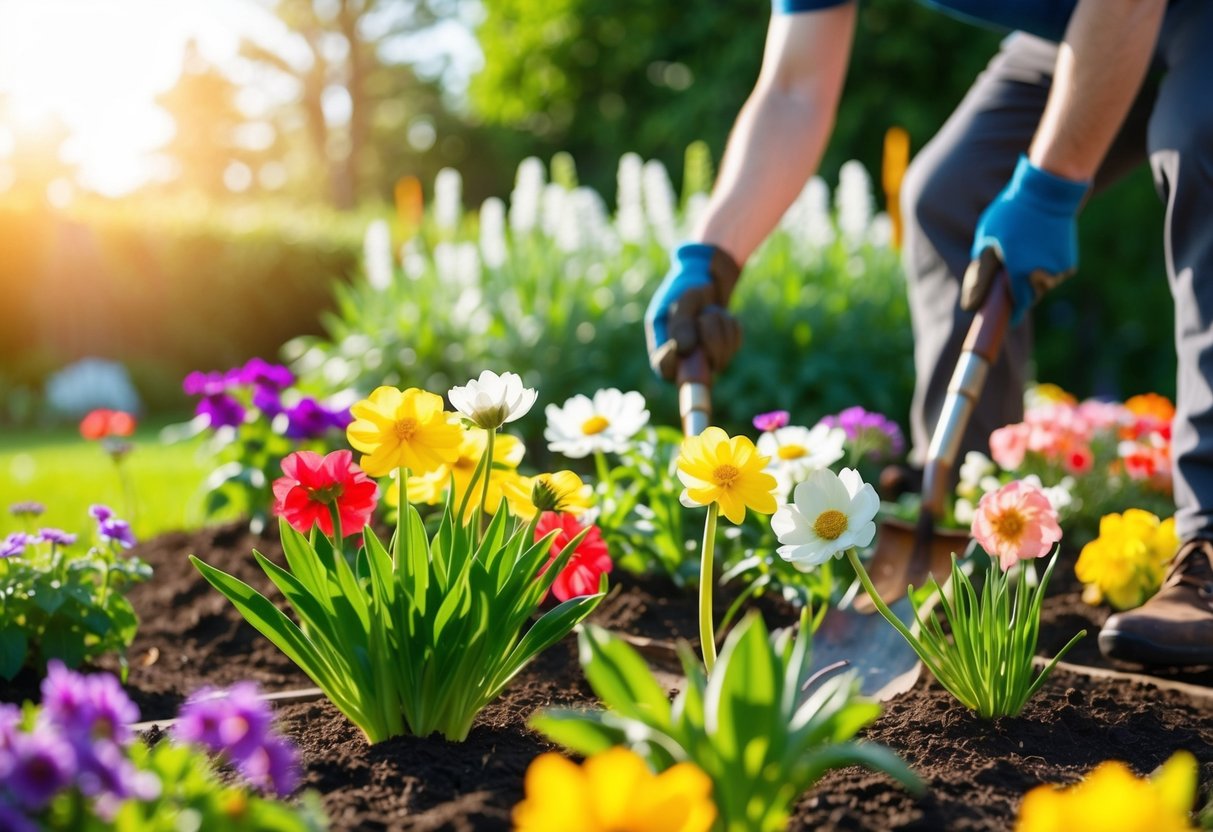What Month Is Best to Plant Annuals? A Gardener’s Guide
When creating a vibrant garden, choosing the right time to plant annuals is key. Annuals are those cheery plants that bloom all season long but only live for one year. The best month to plant annuals depends on your climate zone. Generally, planting in spring after the last frost date ensures a colorful display all summer. If you’re unsure of your climate zone or when the last frost occurs in your area, a helpful gardening calendar can guide you.

You might wonder why timing matters so much. Planting annuals at the right time ensures they have the best chance to thrive, giving you a bloom-filled garden that lasts from spring until fall. In warmer zones, some annuals might even be planted earlier, maximizing their growing season. To get more specific, check recommendations for your specific zone such as those from Garden Basics.
Starting your annual planting journey can be exciting! Whether it’s the colorful zinnias or robust marigolds, choosing the right time and place will help your garden flourish. Understanding the ideal planting time can make all the difference in achieving a garden that’s both beautiful and bountiful. Dive in and discover more about creating the perfect summer garden with annuals.
Understanding Annuals and Their Lifecycles

Annuals are plants that complete their entire lifecycle in one growing season. They bloom, set seeds, and die within the same year. Knowing the difference between hardy and tender annuals helps guide when and where to plant these vibrant flowers.
The Distinction Between Hardy and Tender Annuals
Hardy annuals like calendula and primrose can withstand cooler temperatures. They are cold tolerant and are often planted before the last frost date. This means you can enjoy their blooms even in early spring. These types of annuals thrive in environments where the temperature drops a little at night.
Tender annuals, such as marigolds, zinnias, sunflowers, and impatiens, thrive in warmer weather. These should be planted after the risk of frost has passed, often in the late spring or early summer. Tender annuals are sensitive to cold and can get damaged if exposed to frost. Knowing your region’s frost dates ensures you start their planting at the right time.
Popular Annual Varieties
Annual flowers provide a splash of color, with many popular varieties to consider. Marigolds and zinnias are bright and long-blooming, making them favorites in garden beds. Sunflowers add height and drama, while impatiens bring vibrancy to shadier spots.
For tropical flair, consider planting dahlias and cannas. These are tender annuals that love the sun. Each of these plants offers a unique charm, ensuring that your garden displays a wide range of textures and colors. By choosing a mix of different annuals, you can achieve continuous color throughout the growing season.
Optimal Planting Times

Knowing when to plant annuals depends significantly on your local growing zone and the time of year. Understanding these factors helps ensure that your garden flourishes with vibrant blooms throughout the season.
Determining Your Growing Zone
Your growing zone, also known as a hardiness zone, plays a crucial role in deciding the right time to plant. In the United States, these zones are defined by the USDA. They range from Zone 1, the coldest, to Zone 11, the warmest. You’ll want to find out your zone to determine safe planting times.
Knowing your zone helps you understand the typical last frost date. For example, if you’re in Zone 7, your last frost date is usually around mid-April. This information is essential for planning when to plant both cool-season annuals and warm-season varieties.
Month-by-Month Planting Guide
You can plant annuals at different times depending on your zone and the type of plant. Here’s a simple breakdown:
- Zones 1-5: Start seeds indoors in March. Transplant outdoors after the last frost date in late May.
- Zones 6-7: You can plant outdoors from mid to late April.
- Zones 8-10: Plant in March for spring blooms.
- Zone 11: January to February is ideal for planting due to this zone’s mild climate.
Consider when frost is least likely to affect your plants. For example, in Zone 8, annuals can go outside around March 15. Always check the specific needs of the annuals you’re planting to align with local conditions and frost dates.
Soil and Site Preparation

Taking time to prepare your soil and choose the right spot will help your annuals thrive. Think about adding organic matter and checking sunlight and drainage to set up the perfect environment for your plants.
Incorporating Organic Matter
Adding organic matter like compost or well-rotted manure is important for soil preparation. This boosts nutrients and helps create well-drained soil. A good mix can prevent nutrient deficiencies and provide the right environment for plant roots.
You should mix organic matter into the top few inches of soil. This not only enriches the soil but also improves its structure. By enhancing soil aeration and water retention, organic matter makes it easier for roots to grow deeply.
To limit weed growth and maintain soil moisture, consider applying mulch. Mulching around your flowers helps in reducing water evaporation and keeps your plants healthy. It’s a simple step but has a big impact on your garden’s health and appearance.
Assessing Sunlight and Drainage
Choosing the right location for planting is crucial. Most annual flowers prefer full sun, meaning at least six hours of direct sunlight each day. Inadequate sunlight can lead to weak, spindly plants and fewer blooms.
In addition to sunlight, check your site for proper drainage. Waterlogged soil can harm your plants by drowning their roots. You can test drainage by observing how water behaves after a rain. If puddles remain for hours, consider planting in raised beds or amending the soil.
Monitoring light levels and drainage ensures your annuals get the best start possible. Adjusting your garden setup can lead to flourishing plants that are vibrant and healthy.
Planting Techniques for Annuals

When planting annuals, both direct seeding and transplanting are popular methods. Using greenhouses or containers provides different options that can be beneficial, especially in colder climates. Each approach has unique benefits for growing vibrant annuals.
Direct Seeding vs. Transplanting
When you plant annuals, you can choose between direct seeding or transplanting seedlings. Direct seeding involves placing seeds directly into the soil where they will grow. This method suits plants like sunflowers and zinnias that handle environmental stress well.
Transplanting is when you start seedlings in a controlled environment and later move them to your garden. This method is useful for those who live in areas with shorter growing seasons, as it gives plants a head start.
Using Greenhouses and Containers
Greenhouses provide a controlled environment, offering a head start on growing annuals by protecting seedlings from frost. It’s easier to manage temperature and humidity here, which can improve survival rates of young plants. Containers, including hanging baskets, allow you to move plants if weather conditions change suddenly.
Using containers is also a flexible approach that works well for small spaces. You can experiment with the placement of your plantings by watching which locations get the most light or stay warmest. By using these techniques, your annuals can thrive in various environmental settings.
Maintaining Your Annual Flowers

To keep your annual flowers blooming beautifully, focus on proper watering and creating spaces designed for cutting.
Watering and Mulching Strategies
Watering is crucial for the health of your annual flowers. Make sure to check the soil moisture regularly, especially during dry spells. Water the plants early in the morning to minimize evaporation. This allows the plants to hydrate before the heat of the day sets in.
Mulching around your plants helps retain moisture, prevents weeds, and regulates soil temperature. Use organic mulch like shredded bark or straw, spreading a layer about two to three inches thick. This will conserve water and provide nutrients as it breaks down, which is beneficial for your flowers’ growth.
Regularly check the mulch layer to ensure it’s maintaining its depth and replace it as needed. Remember, keeping a balanced watering and mulching strategy can lead to vibrant and healthy plants.
Creating a Cutting Garden
A cutting garden is a designated area where you can grow flowers specifically for making fresh bouquets without harming the look of your main garden.
First, choose a variety of annuals known for long-lasting cut flowers, like zinnias, cosmos, and marigolds.
Plant these annuals in rows or blocks, leaving enough space for easy access and harvesting. When choosing flowers, consider bloom times to ensure you have a steady supply of fresh cuts.
Harvest your flowers early in the morning when they are the freshest and before the sun gets too hot. Cut the stems at an angle and place them in a bucket of water immediately to keep them hydrated. This practice will keep your arrangements beautiful and your garden flourishing.







